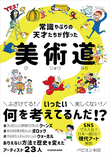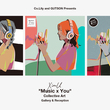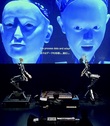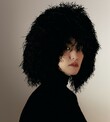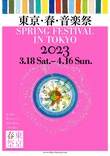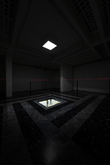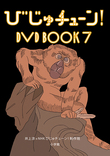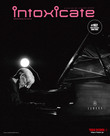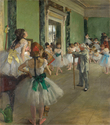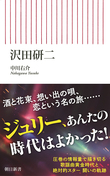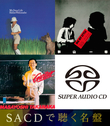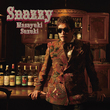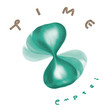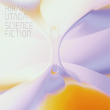“Hoichi-the-Biwaless” is coming!
How did loss of his ears bring him success as a professional biwahoshi? There had been holes to perceive the sound after ears were gone. I think Hoichi had learned to listen to the sound through not ears but pores in the skin. The sense of sight is limited to eyes, and that of hearing is to ears, but the tactile sensation spreads all over the body. The vengeful ghosts may well be said to give Hoichi a chance to become aware of the sense “touching sound”. The following shows the summary of Hoichi’s growth process to the master.
1) Hoichi of one dimension: Blind Hoichi devoted to meditate deeply, and pondered to himself repeatedly. I wonder if he asked such a question to himself as “Why can’t I see?” “Even though I am not able to use my eyes, I do use my ears”, ”To become a good biwa player can make my living by music”. Hoichi put every sensibility except his sight in effect, and applied himself to train his own.
2) Hoichi of two dimensions: Becoming a professional biwahoshi, Hoichi soon became aware of his listener. He could not attain mastery without good reputation of his skill in recitation and playing upon the biwa. Hoichi kept on training his skill to become a biwahoshi who could move hearts of the audiences. In Japanese, we write “Kando” ( = move one’s heart) as “feel (=Kan) and move (=Do)” The people who listened to his performance had never met the characters of Heike Monogatari (The Tale of the Heike) in reality and never witnessed real battle. But they visited, together with Hoichi, many sights in the story, and experienced every emotions of characters. People who sat tight and listened quietly to the biwa imagined that Tairano Kiyomori, Minamotono Yoshitsune and their beautiful wives lived in their minds. Hoichi right before his ears cut off, was the excellent narrative reciter to fascinate many listeners by the story of “felt and moved”.
3) Hoichi of three dimensions: Hoichi of two dimensions connected a person to a person, and a person with a thing one-on-one, like he did a reciter and a listener, the sound and ears. Then, Hoichi as three dimensions is the body of seeing with the whole body and listening. His recitation and performance bridged toward heaven and earth, and could be said to acquire successfully the space and the depth of three dimension. The body of Hoichi generated the sound and the resonation of voice embracing not only listeners but also nature and the universe. The portrait of Hoichi, Hearn wanted to pass on is not poor Hoichi who lost his ears. Renouncing his preference to ears had opened new dimension of the art.
I want to title the strength of the will, “turning misfortune into fortune”, as “Hoichi-ryoku (=power of Hoichi)”. To find the way out of “Anti physical contact syndrome” by coronavirus is necessary to retain “Hoichi-ryoku”. Following outstanding Hearn’s lead, my planned picture book will hopefully present Hoichi of 4 dimensions. Originally, mankind used to have something of “Hoichi-ryoku”. You could easily learn it by observing behaviors of children who reach everything and touch enthusiastically, or life styles of the “savages” in constant close contact.
The modernization has deprived mankind of “Hoichi-ryoku”. Paradoxically, I believe that every events of coronavirus crisis will bring opportunities to recognize and feel firmly the significance of “Hoichi-ryoku”. “No touching - tactile defensiveness”, the spread of these socially accepted ideas consequently got us back to fundamental question of original meaning of “touch”. For this reason, The Story Of Mimi-Nashi-Hoichi must be re-evaluated.
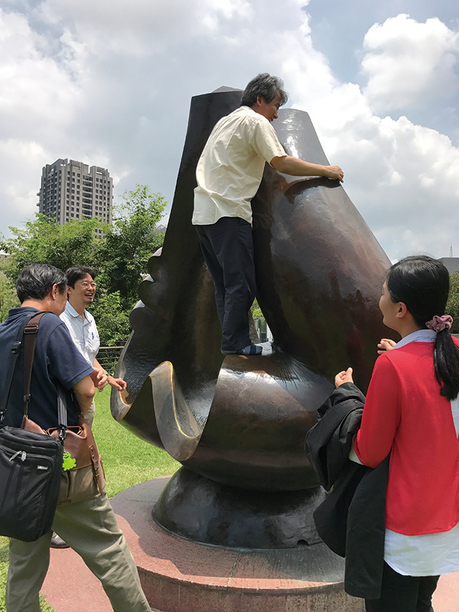
This time, my picture book is to have as many tactile graphics by embossing method of print as possible. Its goal is to realize the idea to be able to touch such invisibles as vengeful ghosts of Heike, stirs among trees, murmuring of a stream, chirping of birds and bugs. Hoichi appearing in 21st century abandons the biwa, and is liberated. He replaces biwa to a new instrument. That is our bodies. Yes, Hoichi stays inside us of now. He gently knocks our pores. I want to expect excitement of touches and contacts created by the entertainer of 4 dimensions “Hoichi-the-Biwaless”. Now, let’s finish “the picture book to touch”, a specific for “Anti physical contact syndrome” soon, through the discourse with Hoichi inside of me. I hear strong voice of Hoichi who turns “Tatari (=a curse)” to “Atari (=a hit)” saying “Don’t ask for a hit without touching God” (=“Sawara nu Kami ni atari nashi”).
P.S. by Translator: In Japan, we have a proverb that means “Don’t ask for a curse by touching God.” In English, which is “Sawarara nu kami ni tatari nashi” in original Japanese. And I referred to Kwaidan Hearn, Lafcadio from Delphi Complete Works of Lafcadio Hearn, Delphi Classics. Kindle Edition for original English titles and names.



